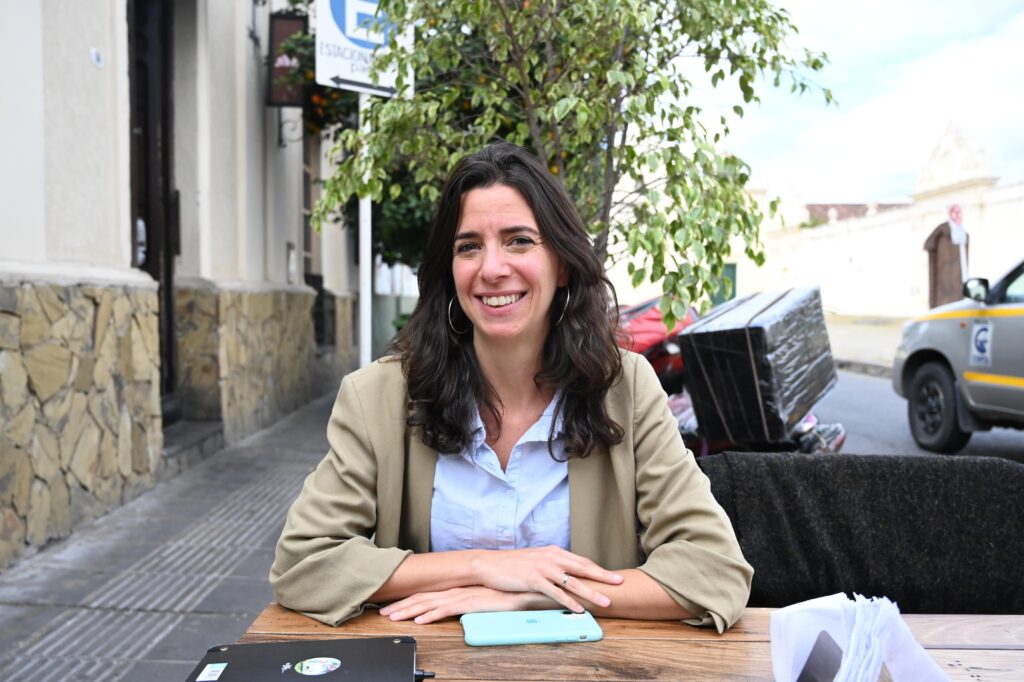“I don’t know what it’s like to write without being attacked.”
This is the testimony of an Argentine journalist quoted anonymously in a new study on the reality many professionals face in the Latin American country that has made the most progress in women's rights over the last decade. The coverage of these advancements—the legalization of abortion and the escalating efforts against gender-based violence—yields the highest rates of online aggression against Argentine journalists.
An Amnesty International study published last month with more than 400 journalists across Argentina found almost two-thirds (63.5%) reported being victims of some form of digital violence in the past six years.
More than half of them (57.4%) said coverage of abortion rights is the primary motivation for online attacks, followed by coverage of femicides and gender-based violence (47.3%) and human rights (46.1%).
“These events are not random,” Lucila Galkin, Director of Gender and Diversity at Amnesty Argentina and coordinator of the study, told LatAm Journalism Review (LJR). “There is an intention to silence coverage of certain thematic agendas that are, in some way, fundamental to the advancement of human rights in general and women’s and diversity rights in particular.”
The journalists reported the most frequent types of violence are isolated insults or assaults (98.3%), harassment or trolling (85.6%), sexual harassment or threats of sexual violence (45.9%), and threats of physical violence (44%).
An overwhelming majority (90%) of responding journalists said they were attacked by anonymous accounts with few followers created to commit the attack, the report said. Another 27% reported being attacked by “social media personalities,” who are very active and influential users. And 23% said they were attacked on digital platforms by political figures.
“The presidency of Javier Milei has initiated a period of great hostility against journalism, with women journalists being the primary target of these attacks,” the study said.
Online aggression against journalists has a silencing effect, the report finds. Half of the interviewees (49.8%) said that after being attacked, they began to self-censor on social media. Many said they started to avoid interaction with the public online (44.7%), stopped participating in some social media platforms (34.5%), or closed their profiles (7.10%).
Nearly one-fifth of the interviewees (18%) said they began to avoid certain topics in their coverage, and 13.3% began to avoid specific sources in their work. Some left their jobs as a result of online violence (2.4%) or stopped practicing journalism (2.4%).

Argentinian journalist Mariana Iglesias, gender editor at Clarín. (Photo: Courtesy of Mariana Iglesias)
“When progress is made, resistance is greater,” Mariana Iglesias, gender editor at Clarín, told LJR. She was the first editor assigned to the beat in Latin America and one of only five gender editors still working in Argentina, which once had gender editors in 13 media outlets.
Iglesias, who was interviewed in Amnesty's study, is one of the journalists who received attacks and threats for her coverage of abortion legalization and stopped participating in a social media platform.
In 2018, while covering the congressional debate on the bill that would guarantee access to voluntary and legal termination of pregnancy in Argentina, Iglesias began receiving insults and images of aborted fetuses at advanced gestational ages in her work email.
“I received a lot of criticism, as well as threats and emails that became increasingly graphic as the congressional debate progressed,” she said.
Iglesias interviewed representatives of the movement opposing abortion legalization, and gave them her phone number. Soon, she began receiving offensive messages and calls warning her to watch her back and directing her to stop writing about gender issues.
“This affected me deeply,” she said. “It was a Sunday, I was at my parents’ house, who are elderly, and I had my two young children with me. I felt very vulnerable”.
Iglesias filed a complaint with a unit of the public prosecutor's office specialized in violence against women, but the investigation could not identify anyone responsible for the emails, messages, and threatening calls. She also informed her managers at Clarín about the attacks she was receiving, and they told her she could stop covering that topic, but she decided to continue.
But she chose to leave the then-Twitter, now X.
“Every time I shared an article or made a comment, I would start receiving a lot of horrible comments, and I thought I didn’t need to read all of that,” Iglesias said.
Mariana Fernández Camacho, a journalist and member of the non-profit Comunicación para la Igualdad, told LJR that she has never had a profile on X/ Twitter precisely because of the abundant attacks on women journalists on the platform. She has also abandoned coverage due to an online assault she received.

Argentinian journalist Mariana Fernandez Camacho. (Photo: Courtesy of Mariana Fernandez Camacho)
She recounted that in 2014, while covering cases where men accused of sexually abusing their children were suing the children’s mothers and accusing them of “parental alienation,” she began receiving emails filled with insults and threats for her reports that gave voice to the mothers of the children. At one point, she received an email that mentioned her four-year-old son and referenced the daycare he attended, his route to school and his drop-off and pick-up times.
The threat to her son made Camacho stop covering that topic.
“I felt the fear in my body,” Camacho said. “And this made me act in a certain way: I stopped writing. It’s important to highlight the intrinsic relationship between violence in the virtual world and the fact that we disappear from the public scene and from the media.”
Camacho only returned to writing on this topic in 2022 for the portal Infobae, where she had been freelancing for almost five years. However, she was let go as a contributor last month.
“The crisis has also reached the private sector, so they cut all external collaborations. I was covering gender issues, women's rights, and diversity, so it’s one less voice in the coverage of these topics,” Camacho said.
Iglesias said the sustainability crisis of news outlets, combined with the hostile environment toward journalism in general and women journalists in particular, is affecting coverage of these issues in Argentina. Even Argentine media that have established a gender perspective are abandoning these topics because, according to them, they no longer attract an audience, Iglesias said.
“The threats and criticism on social media regarding everything related to feminism and gender are terrible, which causes many colleagues to quit,” she said. “There isn’t much profit in this today. There is no widespread respect because, from the president down, there is no longer respect. There is no help or financial support from the newsrooms because we, journalists, are earning less and less, as salaries are extremely precarious and media outlets are selling less and less.”
Amnesty’s study also highlights the impact of digital violence against women journalists in relation to the precarious working conditions many face in Argentina.

Lucila Galkin, Director of Gender and Diversity at Amnesty Argentina. (Photo: Courtesy of Lucila Galkin)
“The socio-occupational situation of women journalists somehow conditions where gender violence finds them, whether in a newsroom or alone at home being attacked, and how they feel they have the support of their environment to express themselves safely and practice their profession without fear of retaliation,” Galkin said.
The report makes recommendations for news outlets to develop protocols to prevent violence online and to support journalists who become targets of online harassment. It also includes recommendations for the Argentine government and digital platforms to address this issue.
“One of the great challenges we face is that, currently, for online platforms, the priority is a business model, not a societal model,” Galkin said. “It falls on the governments, and they have a great challenge to intervene and create policies that guarantee freedom of expression for everyone.”